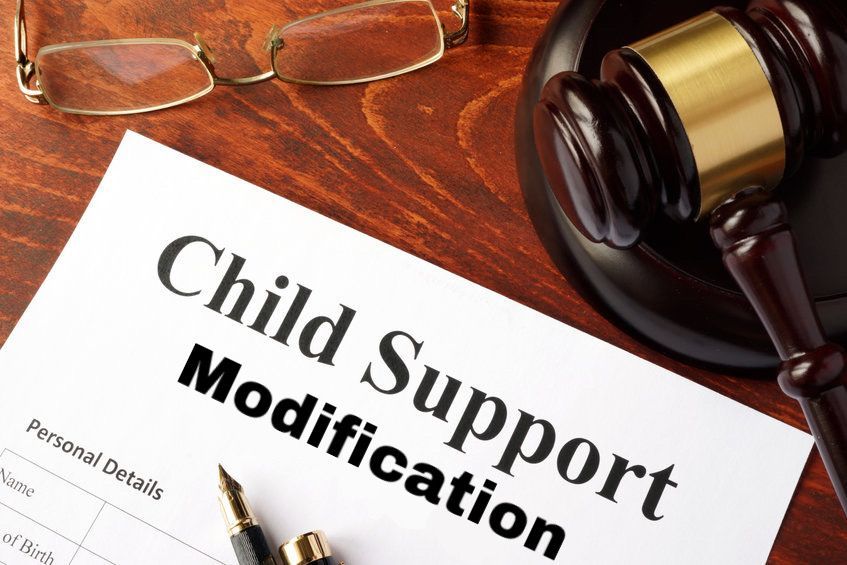Does the Father Have to Pay Half of Childcare?
It depends on where you live. In many states, both parents share childcare costs equally, meaning the father pays half. But in other states like New York and California, parents split costs based on how much money each person makes. The parent who earns more pays a bigger share. These costs usually come on top of regular child support payments.
If you're wondering who pays for daycare, babysitters, or after-school care, this guide will help you understand the rules. We'll explain how different states handle childcare costs, what counts as childcare, and what you can do if you need help with these expenses.
How Childcare Costs Are Split Between Parents
When parents separate or divorce, figuring out who pays for childcare can be tricky. Courts understand that childcare is needed so parents can work and support their kids. That's why almost every state has rules about splitting these costs.
The Two Main Ways States Handle Childcare Costs
There are two common ways courts divide childcare expenses:
50/50 Split Method
Most states require that childcare costs are split 50/50 between the parents. This is the most straightforward way. If daycare costs $400 per week, each parent pays $200. It doesn't matter who makes more money. The cost is divided right down the middle.
This is sometimes called the Shared Income model and functions under the assumption that the resources of both parents will be similar to when they were working together as a household. This method works well when both parents earn similar amounts of money.
Income-Based Split Method
In New York State, child care expenses are allocated between the parties in proportion to the parent's respective incomes, using the same percentages that are used in calculating the basic child support payment. This means the parent who makes more money pays more of the childcare bill.
For example, if one parent makes $60,000 per year and the other makes $40,000, their combined income is $100,000. The first parent earns 60% of the total, so they pay 60% of childcare costs. The second parent earns 40%, so they pay 40%.
The parent who makes more money is usually expected to contribute a greater share of the childcare expenses—even if they don't use childcare services directly.
Why Childcare Is Separate From Regular Child Support
Many people think child support covers everything, including daycare. But that's not always true. Childcare expenses are considered "mandatory add-ons," meaning that courts legally must order child support payment to cover certain costs.
Regular child support usually covers:
- Food and clothing
- Housing costs
- School supplies
- Basic needs
Childcare costs are extra because they help the parent work or go to school. Courts see these as necessary expenses that benefit the child and should be shared.
What Counts as Childcare for Child Support
Not all babysitting or care counts when courts calculate who pays what. There are specific rules about what qualifies as work-related childcare.
Types of Childcare That Qualify
Licensed daycare facilities, preschools, even babysitters and nannies all qualify, though if the cost of a family member babysitter is being included in child support, the custodial parent must prove the babysitter is being paid.
Common types that count:
- Licensed daycare centers
- Preschool programs
- Before and after-school care
- Summer day camps
- Nannies or in-home care
- Family member babysitters (if you can show proof of payment)
Work-related childcare means a place or person the child or children go to while the custodial parent is working. The key word here is "work-related." If you need care so you can go to your job, it usually counts.
What Doesn't Count as Childcare
Babysitting costs for a night out may not be work-related childcare costs. Courts won't make the other parent pay for:
- Date night babysitters
- Care during social events
- Babysitters for personal errands
The care must be needed for work, job training, or education that leads to employment.
Proof You Need to Show
To get the other parent to pay their share, you need to show proof. This includes:
- Receipts from the daycare or babysitter
- The name and contact info for the care provider
- How much you pay each week or month
- Why you need the care (like work hours)
A parent who incurs child care expense shall provide written verification of the cost and identity of a child care provider to the other parent upon initial engagement of a provider and thereafter on the request of the other parent.
State-by-State Differences in Childcare Payment Laws
Where you live makes a big difference in how childcare costs are divided. Let's look at how different states handle this issue.
States That Use 50/50 Split
Most states function under this model and each parent gives a percentage of their overall income that previously went to childcare costs. States using this approach include:
- Utah
- Many Midwestern states
- Several Southern states
In these states, it's simple math. Add up the childcare costs for the month, divide by two, and that's what each parent owes.
States That Use Income-Based Split
Some states divide costs based on how much each parent earns. This list includes:
New York: Child care expenses are allocated between the parties in proportion to the parent's respective incomes.
California: The new law makes it mandatory to allocate child support add-ons based on the parties' incomes. The higher-earning parent will pay a larger share of the expenses, while the lower-earning parent's share will be adjusted down.
New Jersey: The parents divide the childcare expenses proportional to the percentage each parent contributes to the combined total income of both parents.
Illinois: The court will typically order each parent to pay a portion of the childcare expense proportional to their income share.
Rhode Island: A party will be ordered to pay approximately the same percentage of the daycare that the party makes in relation to that party's percentage of the combined gross income of both parties.
Recent Changes to State Laws in 2025
Laws change, and 2025 brought several updates:
Michigan: For childcare, the law raised the age limit to include children until the end of the month they turn 13. This means more kids qualify for shared childcare costs.
California: There is a rebuttable presumption that childcare costs actually incurred for a parent to work or to obtain education or training for employment skills is a reasonable cost. This makes it easier to get childcare costs approved.
Texas: The child support income cap rises to $11,700 per month, which affects how much high-earning parents pay toward all child expenses including childcare.
Rhode Island Childcare Payment Rules
If you live in Rhode Island, here's what you need to know:
Childcare costs necessary for employment, education, or job training are typically shared between parents in proportion to their incomes.
If there are child care expenses for the child, they are included in the calculation when the court figures out child support. Rhode Island uses an income shares model, which means both parents' incomes are considered together.
For example, if the father makes $100,000 and the mother makes $50,000, the combined income is $150,000. The father earns 66% of the total, so he would pay 66% of the daycare costs.
This amount is added onto the minimum Guidelines amount, meaning it comes on top of regular child support payments.
How to Request Childcare Cost Reimbursement
Getting the other parent to pay their share of childcare isn't automatic. You need to take action.
When to Request Reimbursement
You should ask for childcare cost sharing when:
- You're filing for child support for the first time
- Your child starts daycare after child support is already set
- Your childcare costs increase significantly
- You go back to work and need care
A parent has 90 days to request reimbursements from the other parent for childcare add-ons in California. Other states have similar time limits.
How to Make the Request
Most states require you to:
- Give written notice: Tell the other parent about the childcare expense right away
- Provide documentation: Send receipts, bills, and proof of payment
- File with the court: If the other parent won't pay, you may need to go back to court
Child care expenses were traditionally included on the child support worksheet and still can be. However, the law changed a few years ago to allow the child care expenses to be treated separately, usually on a pro rata basis.
What Happens If You Don't Give Notice
Some parents lose their right to reimbursement if they don't tell the other parent about childcare costs quickly enough. His lawyer is telling him he doesn't have to because I didn't give him "notice".
To avoid this problem:
- Tell the other parent before you start using childcare
- Send them copies of all bills and receipts
- Keep records of all communication
- Don't wait months to ask for payment
Going Back to Court
If the other parent refuses to pay, you can ask the court to modify the child support order. You can bring the father back to court, because child care adds to the number used in figuring out the child support.
When you go to court, bring:
- Proof of your work schedule
- Childcare bills and receipts
- The provider's name and license number
- Your pay stubs
The judge will review the information and decide if the childcare costs are reasonable. If they are, the judge will order the other parent to pay their share.
Common Questions About Fathers Paying Childcare
Let's address the questions parents ask most often about splitting childcare costs.
Does Child Support Already Cover Daycare?
Not usually. Child support payments don't always cover childcare expenses, but they can be divided after divorce—even if your child doesn't attend daycare while in the other parent's care.
Basic child support covers food, clothing, and shelter. Childcare is considered an extra expense because it allows the custodial parent to work.
Can the Father Refuse to Pay if He Doesn't Use the Daycare?
No. The court believes that childcare expenses are an obligation of both parents and that both parents have the right—and even responsibility—to be employed.
Even if the father has the child on weekends and doesn't need daycare during his time, he still has to pay his share of the costs when the child is with the mother during the week.
What If I Use a Family Member for Childcare?
You can include family members as childcare providers, but you need to prove you're actually paying them. If the cost of a family member babysitter is being included in child support, the custodial parent must prove the babysitter is being paid.
Keep good records:
- Write checks or use electronic payments (avoid cash)
- Have a written agreement about the rate
- Get receipts
- Show the payments on your bank statements
Can I Choose Any Daycare I Want?
This can be complicated. While each parent wants the best care for their child, determining what is best may be disputable. One parent may want a safe, clean, and fun preschool, while the other wants that plus private school education and arts enrichment.
Courts usually look at:
- Whether the cost is reasonable for your area
- Whether the care is needed for work
- Whether one parent can afford very expensive care
- What both parents agreed to (if anything)
If you pick a very expensive daycare without discussing it, the court might not make the other parent pay for all of it. It's better to discuss options before enrolling.
What If the Father Has Low Income?
If a mother and father separate or divorce and both have an income of $40K, the parent that does not get custody must not only pay taxes and pay 17% of income to child support but also be liable for approximately 50% of daycare cost.
This can create real financial hardship. For a parent earning $40K, the extra $200 a week or $10K/year in daycare will break that parent and will be an absolute untenable obligation.
Some courts may:
- Adjust the payment plan
- Allow different payment schedules
- Consider the parent's overall financial situation
- Look at whether the expenses are necessary
When Do Childcare Payments Stop?
For childcare, the law raised the age limit to include children until the end of the month they turn 13 in Michigan. The age varies by state:
- Some states stop at age 12
- Others continue until age 13
- A few go longer for special needs children
Generally, once a child can stay home alone safely and legally, childcare cost sharing ends. But this depends on:
- State law
- The child's maturity
- Whether the child has special needs
- What the parents agree to
Can I Get Back Pay for Childcare Costs?
Maybe, but it's complicated. A parent shall begin paying his share on a monthly basis immediately upon presentation of proof of the child care expense.
Usually, you can only get reimbursement from the date you told the other parent about the costs. You probably can't go back and collect for months or years of expenses you never mentioned.
What If We Never Went to Court?
If you don't have a court order, getting the father to pay is much harder. To get an order of the court will require you to file a petition to establish paternity, an award of child custody, and an award of child support.
Without a court order:
- You have no legal way to force payment
- You can't withhold visitation
- You can't garnish wages
- You have no legal protection
It's best to get a formal child support order that includes childcare costs.
The Financial Impact of Childcare on Both Parents
Childcare costs affect family budgets in big ways. Understanding the money side helps parents plan better.
Average Childcare Costs Across the Country
Childcare is expensive everywhere. Daycare can cost upward of $350-$400 per week depending on the age of the child and geographical location.
For many families, that's $1,400 to $1,600 per month. Over a year, childcare can cost more than college tuition at some state schools.
Costs vary by:
- Where you live (cities cost more)
- The child's age (infant care is most expensive)
- Type of care (centers vs. home daycare vs. nanny)
- Full-time vs. part-time care
- Quality and features of the program
How Childcare Costs Affect the Custodial Parent
The parent who has the child most of the time usually needs childcare to work. Over half of working Americans pay over $10,000.00 a year for childcare.
This creates a tough situation:
- They need to work to support the child
- But working requires paying for care
- Even with the other parent's help, costs are high
- Many families struggle to afford quality care
Some custodial parents have to:
- Work fewer hours to reduce childcare costs
- Choose cheaper (sometimes lower quality) care
- Rely on family members for help
- Use multiple care arrangements
How Childcare Costs Affect the Non-Custodial Parent
The non-custodial parent pays child support plus their share of childcare. A parent's duty to pay their pro-rata share of daycare is not, in most cases, open for discussion.
This can be challenging because:
- They pay regular child support
- They pay childcare costs on top of that
- They may have their own living expenses
- They might need childcare during their parenting time too
For low-income non-custodial parents, the combined costs of child support and childcare can take up a large portion of their income.
Tax Considerations for Childcare
Only one parent can claim the Child and Dependent Care Credit on their taxes. Usually, this is the custodial parent who has the child more than half the year.
However, parents can agree to let the non-custodial parent claim the credit if:
- The custodial parent signs a written agreement
- The non-custodial parent attaches the agreement to their tax return
The credit can be worth up to $3,000 for one child or $6,000 for two or more children, depending on income.
There may be an adjustment to take into account the federal tax credit when calculating how much each parent pays for childcare.
When You Should Talk to a Family Law Attorney
Some childcare payment situations are simple. Others need legal help. Here's when you should consider talking to a lawyer.
You Need Legal Help If:
- The other parent refuses to pay their share
- You can't agree on what childcare costs are reasonable
- You need to modify an existing child support order
- The other parent won't provide their income information
- Your child has special needs requiring expensive care
- You're dealing with a high-conflict situation
- You want to ensure the agreement is legally enforceable
You need to obtain an attorney because you need a legal professional to make a proper discovery request for the father's income and expense information.
What a Family Law Attorney Can Do
A lawyer experienced in child support matters can:
- Calculate the correct amount each parent should pay
- File the right paperwork with the court
- Represent you at hearings
- Help negotiate a fair agreement
- Ensure the court order includes all necessary details
- Enforce payment if the other parent doesn't pay
If you're dealing with related issues, you might also need help with child custody or general divorce and family law matters.
Questions to Ask Your Attorney
When you meet with a lawyer, ask:
- How does our state split childcare costs?
- What documents do I need to prove my expenses?
- Can I get reimbursement for past costs?
- How long will the process take?
- What are my chances of getting the support I need?
- What happens if the other parent still won't pay?
Tips for Managing Childcare Costs After Separation
Making childcare work after parents split up requires planning and cooperation.
Communication Is Key
Even when you don't get along with your ex, you need to communicate about childcare:
- Let them know about costs before you incur them
- Share receipts and bills promptly
- Discuss changes to care arrangements
- Keep emotions out of financial discussions
Clear communication prevents misunderstandings and legal problems down the road.
Keep Excellent Records
Documentation protects you if there's ever a dispute:
- Save all receipts and invoices
- Keep emails and texts about childcare
- Track all payments you make
- Note when you told the other parent about costs
- Store documents in a safe place
Consider Flexible Work Options
Both parents might benefit from:
- Remote work to reduce care needs
- Flexible hours to share pickup/dropoff
- Part-time work during the transition
- Coordinating schedules to minimize overlapping care needs
Look for Financial Assistance
Many families qualify for help with childcare costs:
- State childcare subsidy programs
- Head Start for low-income families
- Before/after school programs through schools
- Community programs with reduced rates
- Employer childcare benefits or flexible spending accounts
Research what's available in your area. The help you receive may reduce what both parents need to pay out of pocket.
Review and Update as Needed
Children's needs change as they grow:
- Infant care costs more than preschool
- School-age kids need less care
- Some kids become independent earlier
- Special circumstances may require more care
Review your arrangement every year or two. If costs change significantly, you may need to modify the child support order.
Final Thoughts
Whether a father has to pay half of childcare depends on your state's laws and your specific situation. In many states, yes—costs are split 50/50. In others, payment is based on each parent's income, so the father might pay more or less than half.
The important things to remember are:
- Childcare costs are usually separate from regular child support
- Both parents typically share these expenses
- You need to provide written notice and proof of costs
- The care must be work-related or for job training
- State laws vary significantly
If you're struggling to get the other parent to pay their fair share, don't wait. Take action by documenting your expenses, communicating clearly, and seeking legal help if needed. Children deserve quality care, and both parents should contribute to making that happen.
For Rhode Island families dealing with child support and childcare payment issues, consulting with an experienced attorney can help you understand your rights and get the support your child needs. The legal team at Inman & Tourgee has helped families navigate these complex issues for over 30 years. Don't face this challenge alone—reach out for guidance and protect your family's financial future.











